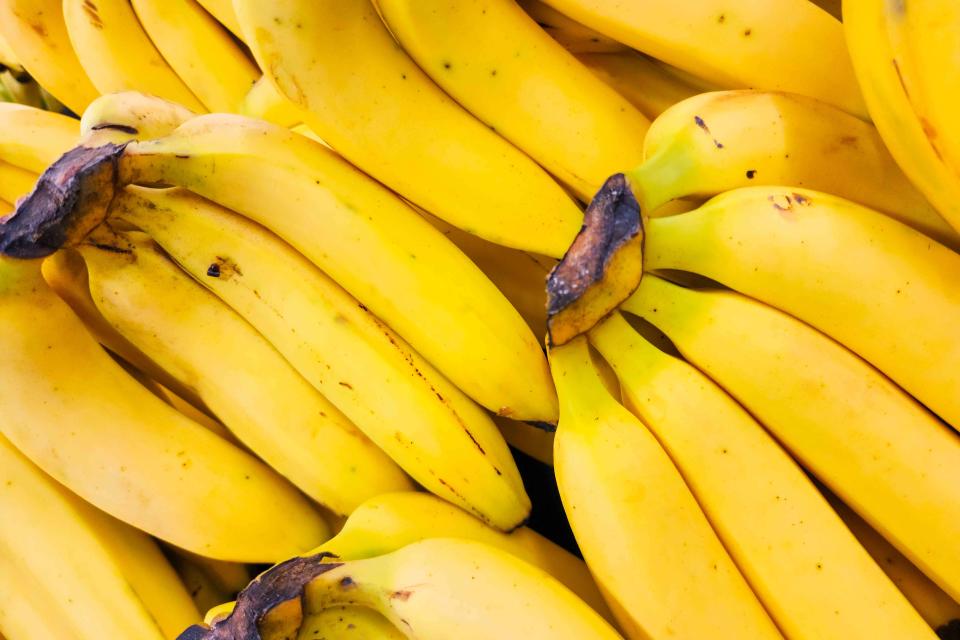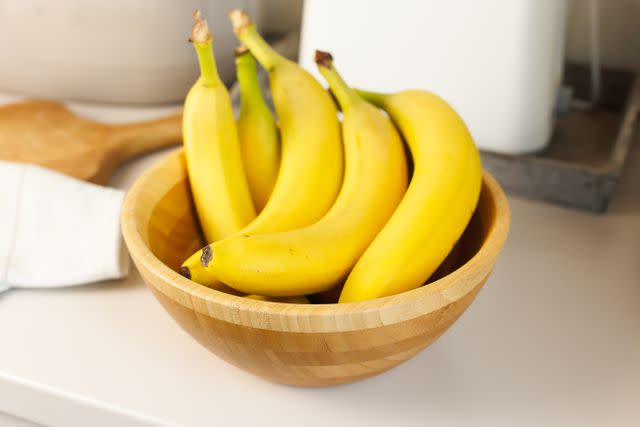The Secret To Making Bananas Last Longer, According to an Expert
There's an easy way to extend their shelf life.

Simply Recipes / Getty Images
We go through a lot of bananas in our house. My husband slices them up to toss on his cereal and I love to make smoothies. But we end up having to bake too much banana bread because some bananas always end up brown and mushy.
There’s a trick to make bananas last longer, says banana expert Ben Huyghe, director of operations for Equifruit, the Quebec-based fair trade banana brand. Huyghe is an agronomist who has spent 25 years in the banana business.
Bananas naturally create a gas called ethylene. Ethylene is released by some fruits and vegetables and can cause some other produce to ripen more quickly.
“If you are worried that your bananas are ripening too quick, then a trick to slow down that process as much as possible is to keep them away from other ethylene-producing fruits—so not in the fruit bowl with apples, pears, etc.,” says Huyghe. “And wrap the crown of the cluster with plastic to keep any ethylene produced from being spread or being absorbed.”
You can use plastic wrap or masking tape—whatever you have on hand.
“I generally wrap a piece of a torn plastic bag with an elastic band to the crown of the cluster,” says Huyghe. “This might slow down the ripening process considerably, sometimes even a couple of days.”
Read More: The Only Way You Should Store Bananas, According to Chiquita
Chiquita Agrees
Chiquita also suggests wrapping the crown in plastic wrap to keep them fresher longer. The company explains on its website: “Because the crown is the point where the bananas were cut from the stem, it’s where most ethylene gas is released and keeping that area under wraps helps to prevent the gas reaching the rest of the fruit.”
Chiquita recommends re-wrapping the crown each time you’ve removed a banana from the bunch.
“Some banana lovers also suggest storing bananas individually, with each separate crown end wrapped in plastic. There’s much disagreement about whether bananas ripen more quickly as a bunch or separately, and whether this affects the taste, so we suggest doing an experiment in your own home conditions to see what you prefer.”

Simply Recipes / Getty Images
Other Banana Tips
If your bananas are too green to eat, keep them at room temperature until they are the perfect ripeness, says Huyghe. “In case you wish to speed up that process at home, you can put them in a paper bag together with an apple, pears, or another riper banana. If you tighten the bag, the ethylene produced by the other fruit will get trapped and speed up the ripening of your (too green) bananas.”
Don’t be tempted to put bananas in the refrigerator, he cautions. He says it’s best to keep bananas above 57°F so they don’t get chilled. Refrigerators usually stay at 40°F or below.
“Bananas love tropical temperatures, therefore never—EVER—place bananas (green or yellow) in the fridge if you want to eat them as a fresh fruit as this will dry out the fruit and might interfere with the natural ripening process, leaving a rather unpleasant eating experience,” Huyghe says.
When Your Bananas Are Too Ripe
If you just can’t save your bananas, you can always make banana bread or smoothies with overripe bananas. Huyghe also has an easy recipe for banana pancakes.
For every two overripe bananas smashed with a fork, add one tablespoon of all-purpose flour, one egg, and one teaspoon of vanilla extract. “If you whisk that together, you have a batter to make some amazing banana pancakes. They are very flavorful and a great alternative as a healthy school snack and don’t need refrigeration to get through the day."
Read the original article on Simply Recipes.


